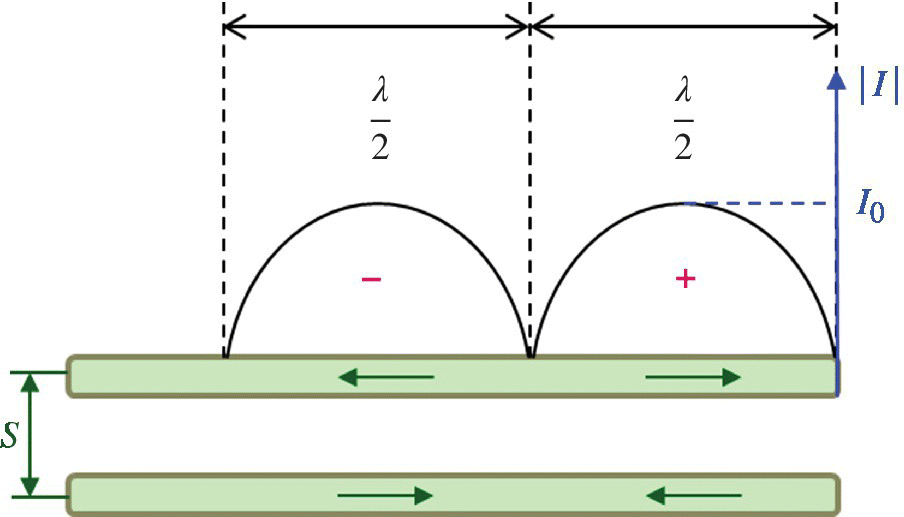18Antennas and Radiation
18.1 Bridge between the Transmission Line and Antenna Theory
In this section we will use the theory of the standing waves on transmission lines discussed in the previous chapter to build a bridge between transmission line theory and the fundamental antenna structure of a dipole antenna.
Consider a standing wave pattern in lossless two‐wire transmission line terminated in an open, as shown in Figure 18.1.

Figure 18.1 Standing wave pattern in a transmission line terminated with an open.
When the incident wave arrives at the open‐circuited load, it undergoes a complete reflection. The incident and reflected waves combine to create a pure standing wave pattern as shown in Figure 18.1.
The current reflection coefficient at an open‐circuited load is −1, and the current in each wire undergoes a 180° phase reversal between adjoining half cycles (this is shown by the reversal of the arrow directions).
The current in a half‐cycle of one wire is of the same magnitude but 180° out‐of‐phase from that in the corresponding half‐cycle of the other wire. If the spacing between the two wires is very small (s ≪ λ), the fields radiated by the current of each wire are cancelled by those of the other. Effectively, there is no radiation from this transmission line.
Now, let’s flare the terminal section of the transmission line, as shown in Figure 18.2 (Balanis, 2205, p. 18).
Get Foundations of Electromagnetic Compatibility with Practical Applications now with the O’Reilly learning platform.
O’Reilly members experience books, live events, courses curated by job role, and more from O’Reilly and nearly 200 top publishers.

